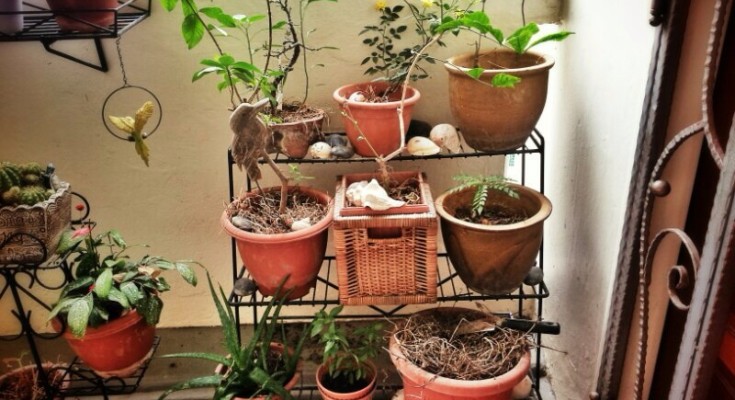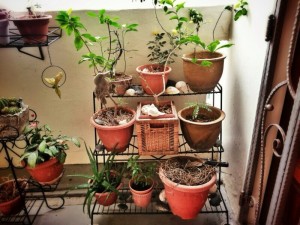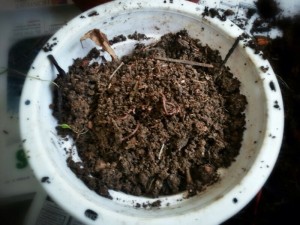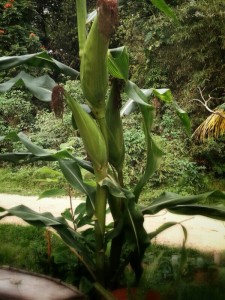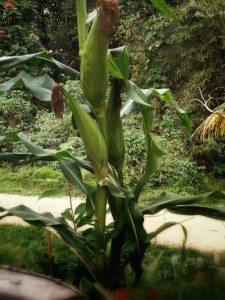Interview with citizen gardener Nina C
The topic of self-sustainability isn’t really addressed in cosmopolitan Singapore. Goods and services are usually accessible via a click or a short drive, and high-rise apartment living has stifled opportunities to be creative with growing one’s own food. Furthermore, the meritocratic education system has fostered a Practical vs. Idealistic dichotomy in a fast-paced rat race which leaves no room for pursuits of the self-sufficient kind. What does one do then, in such a seemingly confining climate.
Luckily, there are bubbles simmering below the surface. Sub-cultural shifts in Singapore have been slowly percolating in the past decade, resulting in pockets of society dedicating themselves to endeavours not usually indulged in by the ordinary Singaporean. The self-sustainability movement is one of them. Besides vertical farming projects and small agricultural initiatives , there have also been Do-It-Yourself urban farming collectives sprouting up in the past few years, generating interest amongst individuals to start their own planting. Latitudes speaks to one of these people, Nina C, a freelance videographer and long-time germinator of ideas, about her thoughts and experiences gardening in Singapore.
Latitudes: Tell our readers a bit more about what you do. When did you start gardening? When did you decide it was possible in a very urban yet tropical climate like Singapore’s? What kind of experience have you had so far?
Nina: I started out gardening quite philosophically at first. A fellow Singaporean friend introduced me to a great documentary called The Power of Community: How Cuba Survived Peak Oil. It was 2007 and the first time I had heard the term ‘permaculture.’ This friend had also spent some months in Ladakh, India, on a ISEC farming project, and had come back quite a different person. I was inspired by her experiences. At that time however, I didn’t do much research on the existence of groups in Singapore committed to self-sustainability and the like; I only knew of Ground-Up Initiative. I didn’t have the time nor the discipline to commit to volunteering with anyone either. So it stayed as just an idea.
In 2008, I decided to travel to India, and after a life-changing trip, returned and started gardening, this time for real. I began within a comfort zone really, which was outside my main door, experimenting with my mother’s neglected, pest-infested corridor plants. Using the net, I identified the plants, the various pests, and organic solutions towards managing them. There were about 10 plants, which was enough to keep me busy. As I gained confidence, I started working on a small plot in Sembawang, which also happened to be a good friend’s backyard. Another friend of mine had also given me a book which had a lot of inspiring, quirky ideas that let my mind run wild. The process that is involved in gardening is something that I appreciate a lot and keeps me inspired. At the end of 2012, I participated in a Permaculture Design course with the awesome Eats, Shoots and Roots in Malaysia, which I Iearnt a lot from. My soil-building efforts showed their results as well. All this ended up kickstarting a great deal for me.
Latitudes: What have you been most proud of growing so far? What made you excited but failed in the end?
Nina: I’m really proud of my chilli, dill, mint and basil plants (which I grew in the aforementioned backyard in Sembawang), these have been giving me really good harvests. My corridor plants outside my home have been flowering a lot too, culminating in yellow roses, basil, turmeric, and curry leaves. I also once had a coriander plant that stayed alive throughout its life cycle, which was amazing, as coriander is one of my favourite herbs. I’ve failed at growing over-ambitious (that is, for my current skill-set) plants like tomatoes, potatoes and cucumbers, growing them without understanding their characters and pollination requirements. As mentioned before, I really like the process a lot. I always learn many lessons from each experience.
Latitudes: There is the assumption that planting your own food is ‘impossible’ in a climate such as Singapore, where most people live in high-rises, and the tropical climate only allows for certain types of fruits and vegetables (if you even have the land at all). What would you say to that?
Nina: That’s ironic, because until the 60s (before the government relocated people to high-rise HDBS, most people who came from poorer backgrounds would tend their own vegetable gardens and small fruit orchards. This saved a lot of costs and also created a larger sense of community, achieved by sharing surplus crops and exchanging seeds. For me, the biggest travesty of Singapore’s journey into urbanisation is the revoking of spaces previously available to anybody for them to grow their own food. The last 40 years of our progress has made us all extremely reliant on a consumer system. It is tragic. The good thing now is that there is information freely available online for people to start doing container gardening in their corridors/balconies where one can grow many varieties of edible crops. The tropical climate is a boon! If people are aware that it is actually possible to grow many varieties of fruits and vegetables, it will be an impetus to start. The supermarket culture we’ve grown up in has led us to forget that there are numerous types of eggplant, cucumbers and tomatoes, etc, that exist in the natural world.
Latitudes: What kind of advice would you give someone in Singapore who wants to give gardening a go for the first time?
Nina: I’d say go for it! Treat plants like how you treat your own body: when we have a healthy system, we are less prone to sickness or fatigue. Same goes for plants. Make the foundation strong; in this case, it’s the soil. Work on creating a healthy soil environment, and always add organic matter/manure to it in order to feed it constantly. Container gardens in regular garden pots need to be switched once every few months. This is due to the fact that nutrients come out through the drainage holes at the bottom when they are watered. Lastly, always start small. The disappointment is easier to handle if you fail.
Latitudes: Besides yourself, there seems to be a burgeoning interest in self-sustainability in Singapore in recent years. What future do you see in the movement? What other organisations/people do you know who are engaged with the movement that you’d like to tell us about?
Nina: Yes, it’s been inspiring to meet more and more people interested in this. I believe food is being used as a currency and that’s a dangerous place for society to be in, so it’s great to see more people also seeing this as a genuine problem and being inspired to grow their own herbs at least. I know of Edible Gardens, they do great work. Also, a fellow participant from the Eats, Shoots, and Roots permaculture course is based in Singapore now, and she runs Cultivate Centra. I’ve contributed to her site a piece on a farm volunteer experience I had, and I hope to upload tutorial videos or do a 1-year review piece to get people more aware and involved.

